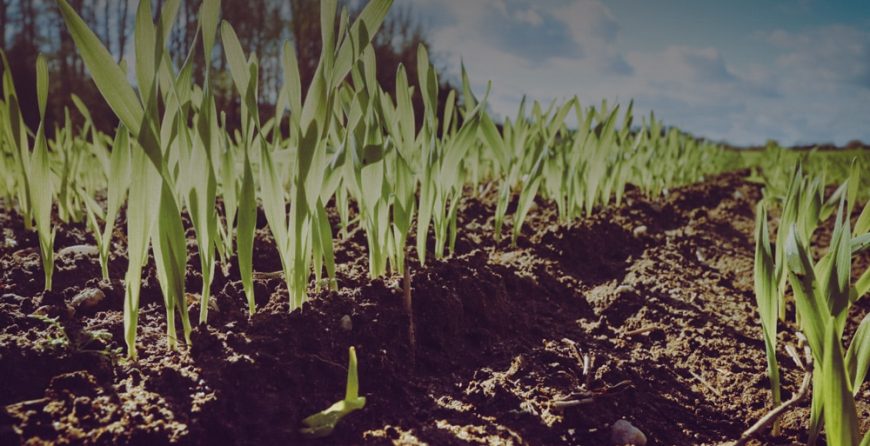 Incorporating more organic foods into your diet is a great way to decrease your exposure to pesticides as well as a great way to protect the environment from further toxic chemical exposure. Yet, going organic can be expensive, especially when more affordable options are available. Fortunately, growing your own fresh, yummy produce isn’t as difficult as you’d think.
Incorporating more organic foods into your diet is a great way to decrease your exposure to pesticides as well as a great way to protect the environment from further toxic chemical exposure. Yet, going organic can be expensive, especially when more affordable options are available. Fortunately, growing your own fresh, yummy produce isn’t as difficult as you’d think.
Starting your own organic garden is a great way to take back control of your diet and chemical exposure. If you’re not sure where to start, you can get a little help by hiring someone to install and/or maintain your organic garden. If you’d like to take things a little easier on your pocketbook, you’ll find that getting one started takes a small amount of effort and funding.
A good rule of thumb is to start small. You don’t have to start with every vegetable under the sun if gardening is new to you.
If you’re new to the concept of organic gardening, that’s totally fine. Organic gardening means that you can’t use synthetic fertilizers or pesticides. Most people assume that this means their plants are left to grow wild and on their own, but there are tools and strategies you can use to keep pests away.
Organic gardening is about so much more than what you can’t do. It’s about creating a natural ecosystem that produces safe, healthy yields. Here’s how to get started:
1. Prep your soil
The key to producing the best results is to ensure your soil is in good condition. Just like you, your plants have to eat, and it’s important that they receive plenty of nutrients. When you start with healthy soil, your plants will become strong and produce good yields. One of the best ways to test the quality of your soil is to use a home testing kit that looks at the pH and nutrient levels. If you’re seeking advice in your local nursery or gardening center, be sure to tell them you’re growing organic.
2. Make good compost
The best kind of compost is the kind you create in your own backyard! After all, why not since it’s free. Good compost is important because it feeds your plants, conserves water, eliminates weeds, and keeps waste out of the landfill. To create our own compost pile, make a space that’s at least three feet square. Then start to build the pile by using alternating layers of carbon (brown material such as leaves and garden trimmings) and nitrogen (green material such as kitchen scraps). Place four to six inches of soil on top and turn the pile over as you add new layers.
3. Order your seeds
When purchasing seeds, make sure to select plants that were raised without chemical fertilizers and pesticides. Typically a great source for seeds is the local farmers’ market. This is also a great source for plants native to your area.
4. Use wide beds
Place your plants in tight groups. This will help reduce water waste and weeding. Even though you’re starting with seedlings, they won’t always be that small, so focus on placing plants in a way that will limit overshadowing. Keep in mind that plants such as indeterminate tomatoes, zucchini, swiss chard, tall snow peas, and pole beans, are great for gardeners who have limited space and time.
5. Water carefully
Did you know that the best time to water your plants is first thing in the morning? This is because mornings are typically cooler with no strong winds, so the amount of water that evaporates is reduced. When watering your plants, be sure to water at the roots as opposed to pouring over the greenery as that can damage plants.
6. Remove weeds
Limit the number of weeds popping up in your garden by applying mulch. This is a two-for-one as mulch will protect your garden’s soil. Remember to keep it organic!
7. Protect your plants
Seeing pests in your garden could be a sign of several issues. For starters, make sure your plants get enough light, moisture, and nutrients. Plants that are in poor shape are easy targets for pests. Increasing the biodiversity in your garden is also a great strategy for limiting pest exposure because potential enemies won’t have access to large amounts of one plant. If worst comes to worst, use nets and covers to keep pests away. Keep in mind that certain insects such as bees and ladybugs are friends.
8. Get your harvest on
It should go without saying, but don’t forget to reap the benefits by harvesting your garden! Stroll through at least once a day to see what’s ripe for the picking and spread the love to your friends, family, and coworkers. The more you harvest your garden, the more it will continue to produce for you.
9. Clean up
If you end up with a sick plant or two, make sure to remove the entire thing during or at the end of the season. You’ll need to rake the space where the plant was to ensure all the diseased leaves are removed. Then, put all of the infected matter in the woods, a foot deep in the ground, or in the firepit.


